- May 04, 2021
 0
0- by A2 Support Team
When today’s consumer wants to purchase a product or service, the internet is almost always their first port of call. As a business owner, if you don’t have an online presence, you could be missing out on customers and revenue.
Fortunately, moving your business online doesn’t have to be a daunting prospect. With some simple tools and techniques, you can launch a successful website. You can even optimize your site to ensure that you’re providing the best possible customer experience.
In this article, we’ll share a step-by-step guide to moving your business online. Regardless of whether you want to sell products, promote your services, or simply establish an online presence, this guide has everything you need to know. Let’s get started!
Step 1: Choose the Best Domain Name for Your Business
Choosing a domain name is one of the most important decisions you can make. Although you can always switch the URL address at a later date, you risk damaging your search engine rankings. There’s also a chance that the change may confuse your customers.
When moving your business online, you’ll typically want to feature your business’ name somewhere in your domain. However, you may need to make some adjustments depending on the length of your branding.
If your company name is on the shorter side, you may decide to add some relevant keywords. This can help search engines understand what your business is all about, and increases your chances of appearing in relevant Search Engine Results Pages (SERPs).
When deciding which keywords to target, it may help to use tools such as Google Trends or Keyword Planner:
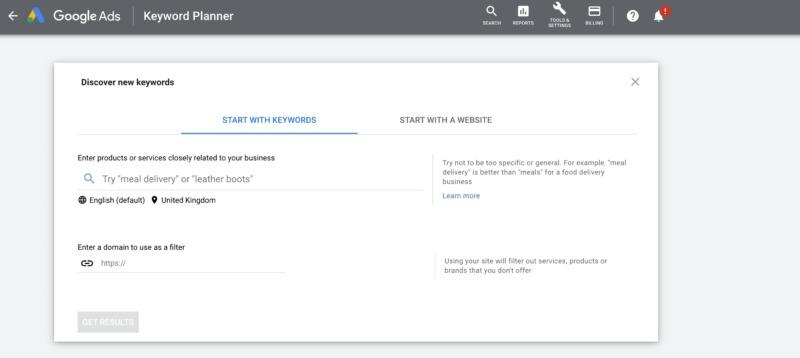
Keep in mind that longer URLs are often more difficult for customers to remember. They can also create more opportunities for errors, such as spelling mistakes and typos.
To prevent this from happening, you might want to develop a shortened version of your branding, such as by using an abbreviation. Alternatively, you could combine an unusual domain extension with part of your business name. For example, the Whisky.Auction website uses the URL “https://whisky.auction”.
You can check to see whether a domain name is available using a tool such as Domain Registration:
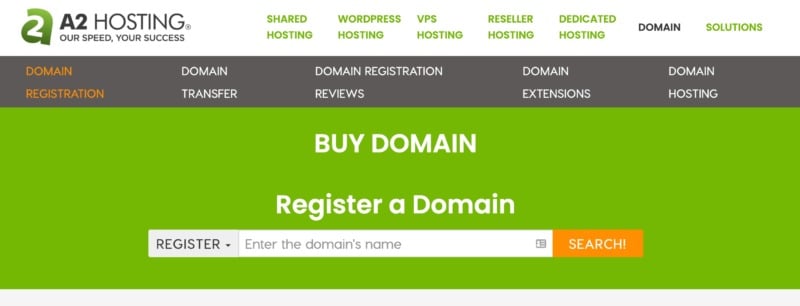
Wherever possible, we recommend purchasing your domain and hosting from the same provider, as this can simplify the administrative work associated with moving your business online. To provide the best possible experience to all our customers, A2 Hosting offers both domain name registration and domain hosting.
Step 2: Purchase Reliable Web Hosting
In addition to a domain name, you’ll need to purchase web hosting. This is the service that’s used to store all the files that make up your website.
When choosing a hosting package, we always recommend checking the provider’s uptime rates. If your site goes down, it can result in lost revenue. According to Gartner, unscheduled downtime can cost a company as much as $5,600 every single minute.
Frequent or lengthy downtime can also make your business seem unprofessional and potentially untrustworthy. A study by Moz even found that internal server errors can cause issues with tracked keywords. This means that your choice of hosting provider may undermine all of your Search Engine Optimization (SEO) efforts.
If you do encounter any issues with your website, you’ll want to get it back up and running as quickly as possible. Therefore, we suggest opting for a hosting provider that offers 24/7 customer support via multiple channels, so you always have access to the information you need to get your site back online:
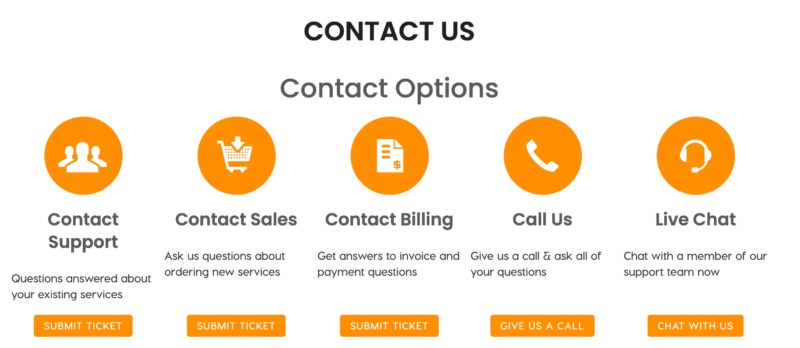
It’s also a smart move to research what customers are saying about your potential hosting provider. Customer testimonials, case studies, and feedback posted on the provider’s website are solid places to start.
However, to get completely unbiased opinions, we also suggest checking third-party review sites such as Trustpilot:
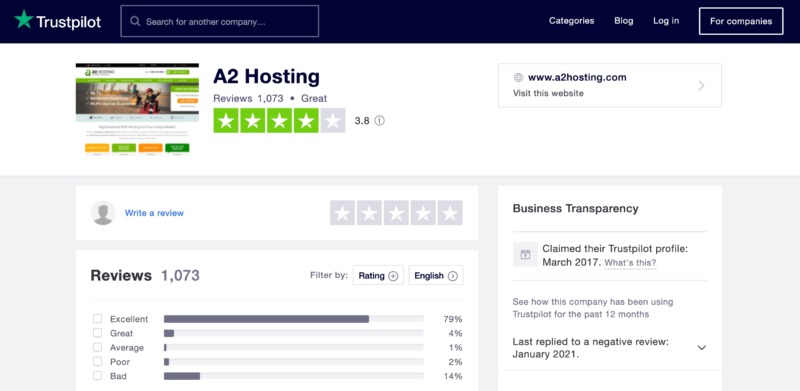
Performance is also crucial. Studies have shown that 40 percent of customers abandon a site that takes longer than three seconds to load, so it’s wise to look for a provider that prioritizes performance. At A2 Hosting, our Turbo Servers are fine-tuned for performance, and can deliver up to 20x faster page load speeds when compared to competing reseller hosting solutions.
Step 3: Choose a Beautiful WordPress Theme
The next step is to actually begin building your site. As one of the most widely-used Content Management Systems (CMSs) in the world, we recommend using WordPress:

After you download and install it, WordPress automatically applies a default theme to your website. However, these default themes are widely used and recognized. If you want to stand out from the crowd, it’s wise to replace the theme with one that is more unique.
WordPress has a large selection of themes that offer various combinations of formatting styles, layouts, fonts, and other visual elements. The right WordPress theme can provide a strong foundation for bringing your creative vision to life, and can help you create a professionally designed website fast – even if you have no previous experience.
You’ll find a range of free options in the official WordPress Theme Directory:
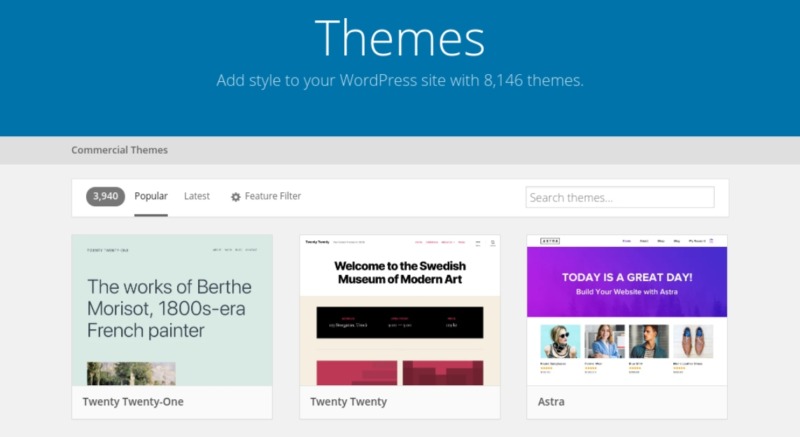
There are also many premium WordPress themes that you can source from reputable marketplaces, including ThemeForest, TemplateMonster, and MOJO Marketplace:
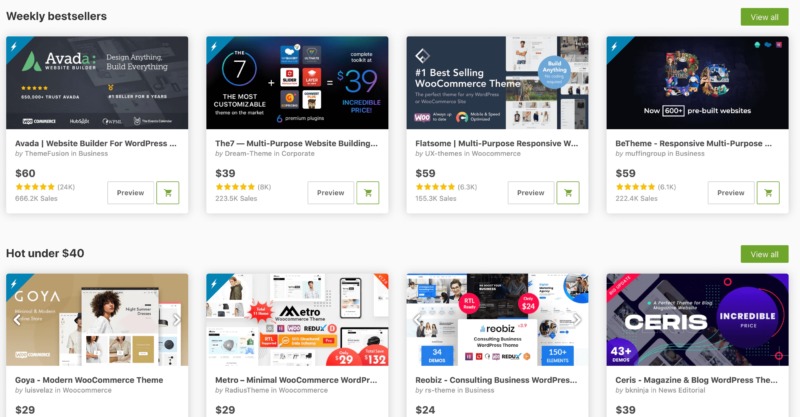
Once you’ve found a theme that offers everything you want, it’s important to ensure that it’s safe to use. An outdated, poorly-developed or maintained theme can introduce bugs, compatibility errors, and security vulnerabilities into your business website.
By acquiring your theme from a reputable source, you’re already off to a strong start. However, it’s always a good idea to check the theme’s reviews.
In particular, it’s smart to pay attention to the latest reviews, as these will often indicate whether there’s an issue with the current release. You can also check whether your chosen theme meets WordPress’s official review standards.
After choosing your WordPress theme, you may want to tweak certain elements. If you’re craving some customization, we recommend checking out a page builder plugin such as Elementor. You can also look into our WordPress Hosting as well!
Step 4: Set Your Site Up for SEO Success
SEO is the key to improving your site’s ranking in the SERPs. When moving your business online, this can deliver the traffic you need to grow your customer base.
To set your new site up for SEO success, we recommend installing a dedicated SEO plugin. Popular choices include Yoast SEO and All In One SEO Pack.
As you’re creating your content, these tools provide actionable recommendations for how to improve your on-site SEO:
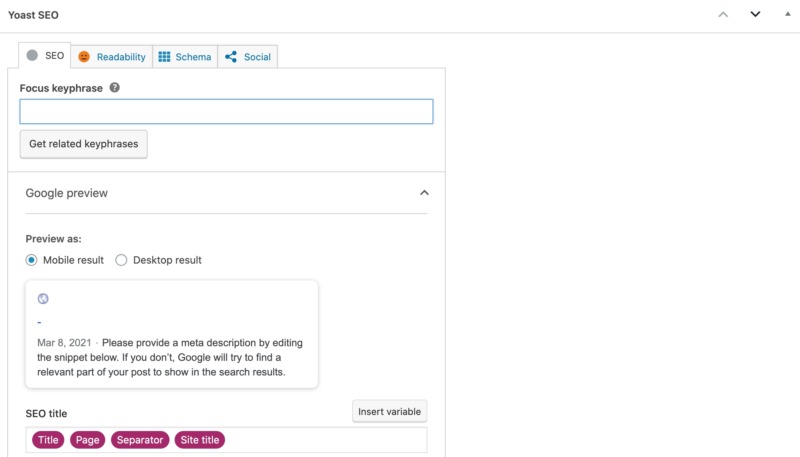
It’s also wise to optimize your permalink structure. This can help search engines understand each page’s contents, which is vital for SEO.
You can examine your site’s permalink structure by navigating to Settings > Permalinks. For best results, we recommend appending each URL with the post name (/%postname%/).
You might also want to prefix the post name with the post category (/%category%/%postname%/). By making this decision early, you can ensure that you’re using a clear, consistent permalink structure from your very first post.
Step 5: Boost Your Business Site’s Security
Security is a huge concern for most website owners. However, it’s particularly important for business sites, as they often handle sensitive customer data such as customer names, addresses, and payment information.
If a malicious third party does manage to breach your website, they could potentially access this confidential customer data. If someone’s private information is compromised as a result of your website, it could be disastrous for your reputation.
At A2 Hosting, we offer a range of features that are designed to help protect your business against hackers. This includes HackScan Protection, brute-force defense, and a dual firewall.
Even if your site is subjected to an advanced Distributed Denial-of-Service (DDoS) attack, our Reinforced DDoS Protection can help keep your site online throughout the incident. This ensures that you can continue selling your products and promoting your services without interruption. It can also minimize the damage to your reputation, as visitors will be completely unaware that hackers are targeting your site.
In addition to choosing the right hosting provider, it’s important to install a Secure Sockets Layer (SSL) certificate. This can help protect your site and your visitors by encrypting all sensitive data and user activity. If you’re an A2 Hosting customer, we provide you with an SSL certificate.
You might also use a website firewall to block malicious traffic before it reaches your website. The Sucuri plugin is a popular choice, as it provides a Domain Name System (DNS) Level Website Firewall that can route your traffic through cloud proxy servers:

Sucuri also offers a range of additional security services. This includes scanning and monitoring your website for signs that it may have been compromised, and removing any detected malware.
Step 6: Enhance Your Site With WordPress Plugins
Plugins are one of WordPress’ greatest strengths. There’s a plugin to help you accomplish almost any task you can imagine.
If you’re selling physical or downloadable products, WooCommerce is a popular e-commerce plugin. This free tool has everything you need to create a wide range of e-commerce sites, and accept payments using popular gateways such as PayPal:

As we mentioned, if you offer appointments, you may want to give customers the option to book directly from your business website. This can help drive conversions, as many customers prefer to make their bookings digitally rather than calling the business.
There are many scheduling plugins available for WordPress. Popular options include Simply Schedule Appointments, Booking Calendar, and WP Simple Booking Calendar.
There’s also a chance that visitors may have questions about your business. There are many plugins that can help you provide answers to these questions, including live chat plugins such as 3CX Live Chat and LiveChat:

Alternatively, you might want to consider using a chatbot. According to research, more than 67 percent of consumers worldwide used a chatbot for customer support in 2019.
This suggests that customers are happy to use chatbots where available. You can add one to your business website using a plugin such as ChatBot:

Regardless of the type of plugins you choose, it’s important to use those tools safely. WordPress plugins add code to your website, which can mean more vulnerabilities for hackers to exploit. A study even found that 98 percent of WordPress vulnerabilities are linked to these add-ons.
To use plugins safely, it’s important to always download them from a reputable source, such as the official WordPress Directory. We also recommend checking each plugin’s reviews carefully, and keeping your installed solutions up to date.
Step 7: Optimize Your Website’s Performance
There’s evidence to suggest that 40 percent of people abandon a website that takes more than three seconds to load. This can have a devastating impact on your conversions and revenue. For example, if you’re running an e-commerce site that makes $100,000 per day, a one-second page delay could potentially cost you $2.5 million in lost sales over the course of a year.
Your choice of hosting provider will have a huge impact on your page loading times. However, there are also steps you can take to improve your website’s performance.
Beautiful, high-resolution images are essential for catching the attention of potential customers. Unfortunately, they can also increase your page loading times – especially for e-commerce stores, which typically contain a large number of product images.
You can reduce the size of an image without affecting the quality using lossy compression. You can perform this kind of compression using either the free TinyPNG service or the TinyPNG plugin:

Your page load times are also determined by server location. You can often improve page load times by using a Content Delivery Network (CDN).
This is a technique for reducing latency caused by geographical distances. A CDN uses geolocation routing to detect the origin of the user’s requests. The visitor will then receive your website and resources from the data center that’s physically closest to them.
Finally, you might want to consider using a WordPress caching plugin, such as W3 Total Cache or WP Super Cache. These tools won’t reduce page load times on the customer’s first visit, but they can significantly speed up your website on subsequent visits.
Conclusion
Moving your business online may sound intimidating. However, you don’t need to be a technical expert or professional designer to build an engaging business website.
To set your site up for success, it’s important to get the foundations right. By opting for a hosting provider that offers speed-optimized servers, you can create a website that’s 20X faster than your competitors. After impressing your customers with your lightning-fast speeds, you can seal the deal with a professionally designed WordPress theme.
To minimize the administrative work associated with running a successful business site, we recommend choosing a provider that offers both domain registration and web hosting. At A2 Hosting, we have a Domain Registration tool that you can use to find your perfect web address, and a range of hosting packages to suit your exact business needs!
Related Resources
- How to Register Your Domain
- Backing Up Your Data
- Guides to Getting on the Internet and Networking
- Starting Your Blog
Image credits: Pexels.










